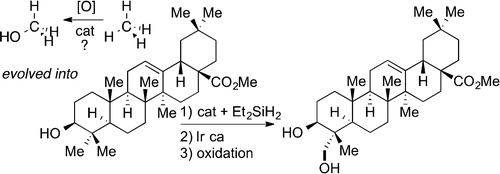Evolution of C-H Bond Functionalization from Methane to Methodology
J. Am. Chem. Soc., 2016, 138 (2-24)
View on publisher site
Abstract
This Perspective presents the fundamental principles, the elementary reactions, the initial catalytic systems, and the contemporary catalysts that have converted C–H bond functionalization from a curiosity to a reality for synthetic chemists. Many classes of elementary reactions involving transition-metal complexes cleave C–H bonds at typically unreactive positions. These reactions, coupled with a separate or simultaneous functionalization process lead to products containing new C–C, C–N, and C–O bonds. Such reactions were initially studied for the conversion of light alkanes to liquid products, but they have been used (and commercialized in some cases) most often for the synthesis of the more complex structures of natural products, medicinally active compounds, and aromatic materials. Such a change in direction of research in C–H bond functionalization is remarkable because the reactions must occur at an unactivated C–H bond over functional groups that are more reactive than the C–H bond toward classical reagents. The scope of reactions that form C–C bonds or install functionality at an unactivated C–H bond will be presented, and the potential future utility of these reactions will be discussed.
Read on publisher's site